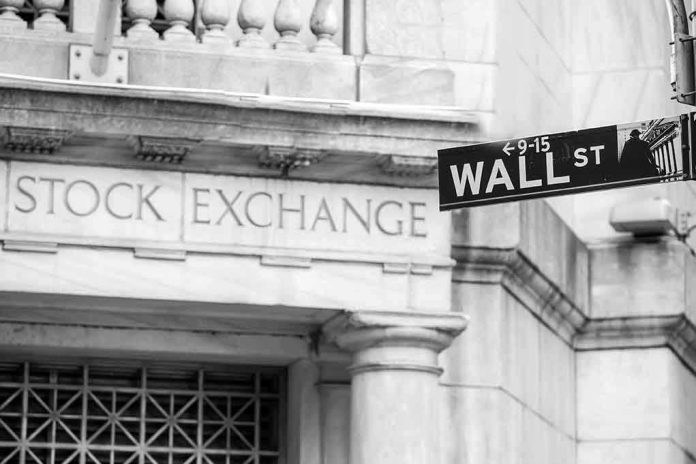
The Federal Reserve’s second consecutive interest rate cut signals growing concerns about labor market weakness, but persistent inflation risks remain a critical challenge for economic stability.
Quick Take
- Fed cuts rates to 3.75%–4.00%, the lowest level since 2022, marking the second consecutive cut in as many months
- Decision reflects concerns about softening employment data and economic risks, though inflation remains elevated
- FOMC dissent reveals internal divisions, with one member opposing the cut and another favoring more aggressive action
- Fed Chair Powell signals December rate cut is “far from” guaranteed, keeping future policy uncertain
- Markets anticipate additional cuts in 2026 as the Fed balances inflation control with employment support
Fed Reverses Course on Rate Hikes
After aggressive rate increases throughout 2022 and 2023 to combat inflation, the Federal Reserve has shifted strategy. In October 2025, the FOMC reduced the federal funds rate by 0.25 percentage points to a target range of 3.75%–4.00%, marking the lowest level since 2022. This move follows an identical cut in September, signaling the Fed’s response to weakening labor market conditions and persistent economic uncertainty amid tariff debates and fiscal policy concerns.
Labor Market Weakness Drives Policy Change
New employment data revealed weaker hiring than previously believed, prompting the Fed’s pivot from its tightening cycle. The central bank aims to balance price stability with maximum employment, but recent labor market indicators suggest risks have shifted. Lower rates reduce borrowing costs for consumers and businesses, potentially stimulating hiring and economic activity. However, the Fed faces a delicate balancing act as inflation remains above target despite moderating from earlier peaks.
Internal Divisions Expose Policy Uncertainty
The October rate cut was not unanimous, revealing significant disagreement within the FOMC about the appropriate policy path. One member opposed the cut entirely, arguing for maintaining current rates, while another favored a larger reduction. These divisions reflect broader uncertainty about whether the Fed is responding appropriately to economic risks or potentially easing too aggressively. Fed Chair Jerome Powell acknowledged this tension, stating that a December rate cut is “far from” a foregone conclusion.
Future Rate Cuts Remain Data-Dependent
Markets currently anticipate at least one additional rate cut in December, with possibly three more cuts expected throughout 2026. However, the Fed’s data-dependent approach means future moves remain uncertain. The central bank will end its quantitative tightening program on December 1, 2025, marking a significant shift in policy stance. This combination of rate cuts and balance sheet adjustments signals the Fed’s commitment to supporting economic growth while monitoring inflation risks closely.
Implications for Savers and Borrowers
Lower rates benefit borrowers through reduced mortgage payments, credit card rates, and business loan costs, potentially easing financial stress for households and encouraging spending. However, savers and fixed-income investors face diminished returns on savings accounts and bonds. The housing market may see renewed activity as mortgage rates decline to their lowest levels in years. These competing effects highlight the complexity of monetary policy in balancing growth with financial stability.
Sources:
Fed FOMC Meeting Analysis – Charles Schwab
Federal Reserve Interest Rate News – U.S. Bank
Federal Reserve Interest Rate Data – Trading Economics














